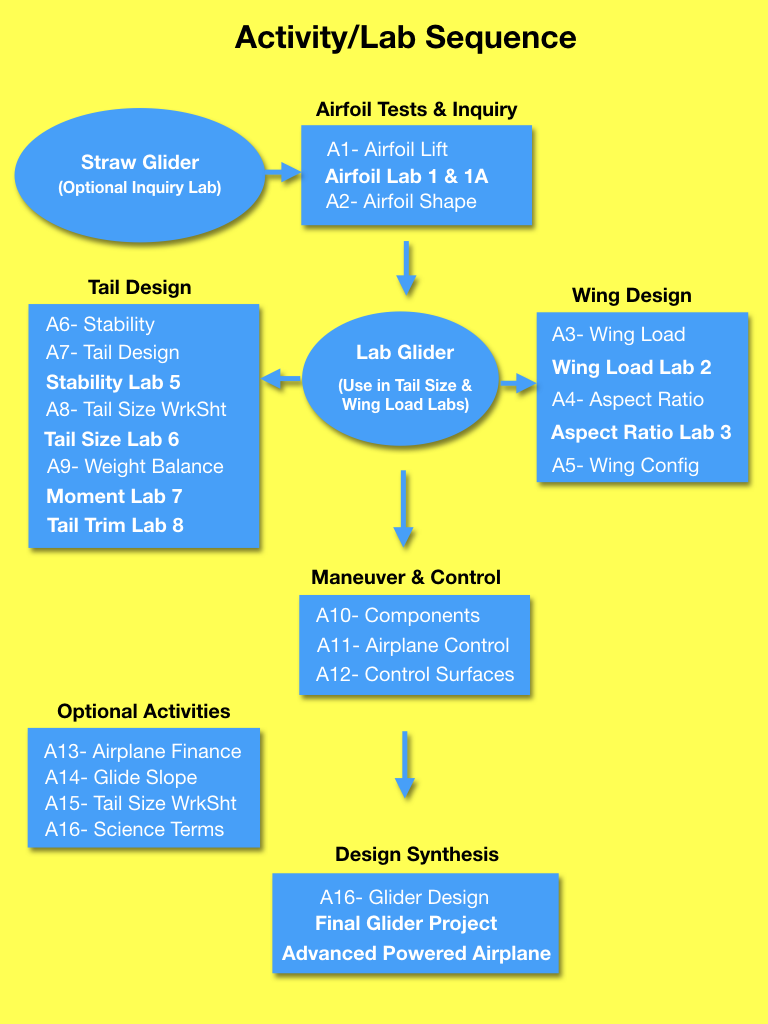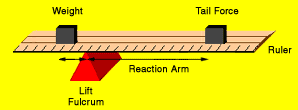
 |
|



| Activity | Objective |
|---|---|
| Airfoils (A1) | To define lift and apply it to airplane design |
| Airfoil Lab | To apply what students have learned about airfoil shape to glider performance |
| Airfoils (A2) | To describe how wing shape and angle of attack effect lift |
| Wing Load (A3) | To describe and measure how wing load effects airplane performance |
| Wing Load Lab | To analyze how wing load effects airplane performance |
| Aspect Ratio (A4) | To describe how aspect ratio effects airplane performance and measure aspect ratio |
| Aspect Ratio Lab | To analyze how aspect ratio effects airplane performance |
| Wing Configuration (A5) | To describe the relationship between wing position and performance |
| Stability (A6) | To describe varying degrees of stability and how stability controls airplane movements |
| Tail Development (A7) | To describe the relationship between airplane stability and a plane's tail |
| Stability Lab | To analyze the relationship between airplane stability and the size of a plane's tail |
| Tail Size (A8) | To calculate correct tail size for individual airplane types |
| Tail Size Lab | To analyze how the relationship between fuselage length and tail size effect stability |
| Weight Balance (A9) | To describe the relationship between AOI and Center of Gravity |
| Moment lab | To use moments to describe how to trim a glider |
| Trimming Lab | To analyze the relationship between AOI and Center of Gravity |
| Airplane Components (A10) | To identify the parts of a plane that control airplane movement |
| Airplane Control (A11) | To describe and label control surfaces of an airplane |
| Glider Maneuver Lab | To apply the principles of airplane movement to a glider design |
| Airplane Costs (A13) | To describe how variables in airplane design and operation effect airline profits |
| Glide Slope (A14) | To describe how gliders with flat symmetrical wings create lift |
| Tail Size Worksheet (A15) | To apply tail sizing formulas to airplane designs |
| Glider Design (A16) | To apply the principles of airplane design to design a glider on computer |
| Final Glider Project | To apply and synthesize the principles of flight to design and building a glider |
These lessons and more are included on the CD along with many additional detailed design guides, supporting documents on aircraft design, and an extensive library of practical aircraft design and build tips. Together, they provide you with a comprehensive science of flight and design unit that can easily be used for one to eight weeks of studies with extensive depth for those that want to go further. Many of the lessons are for use with the computer program while most of the labs are for actual hands-on experiments away from the computer. You can choose the lessons, labs, and supporting documents you wish to use and print them out to distribute to students, or access them from the CD on the computer. All of the aircraft design and build tips are also available here on our web site so that students can look up the tips away from the classroom computer to help them build their aircraft and for additional after-hour and home studies.
Go to:
![]()
![]()
![]()
![]()
![]() Home Page
Home Page